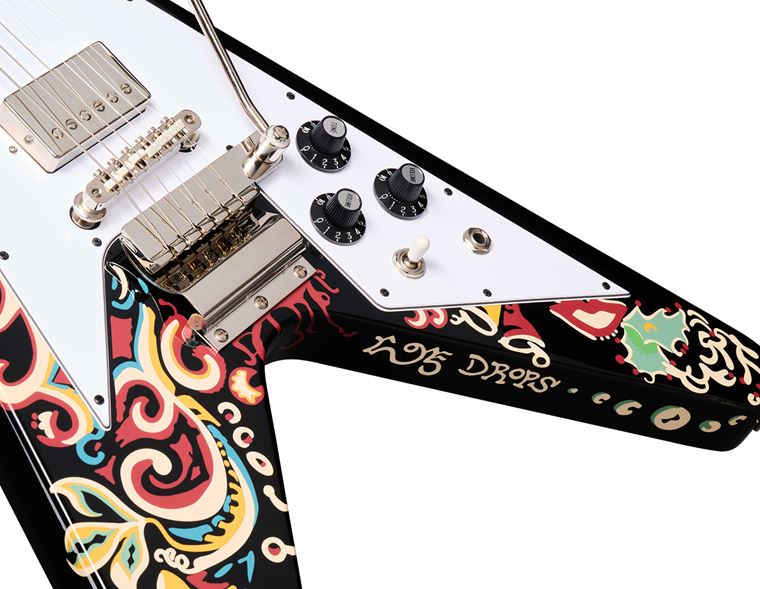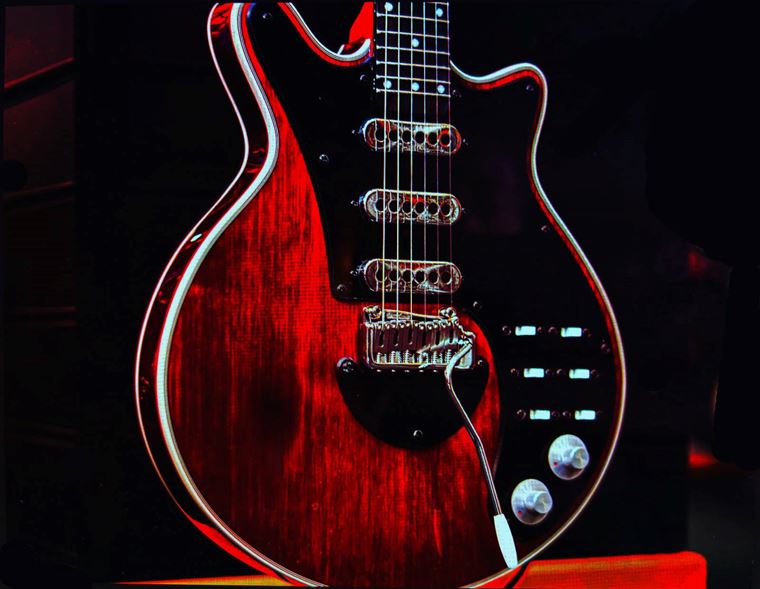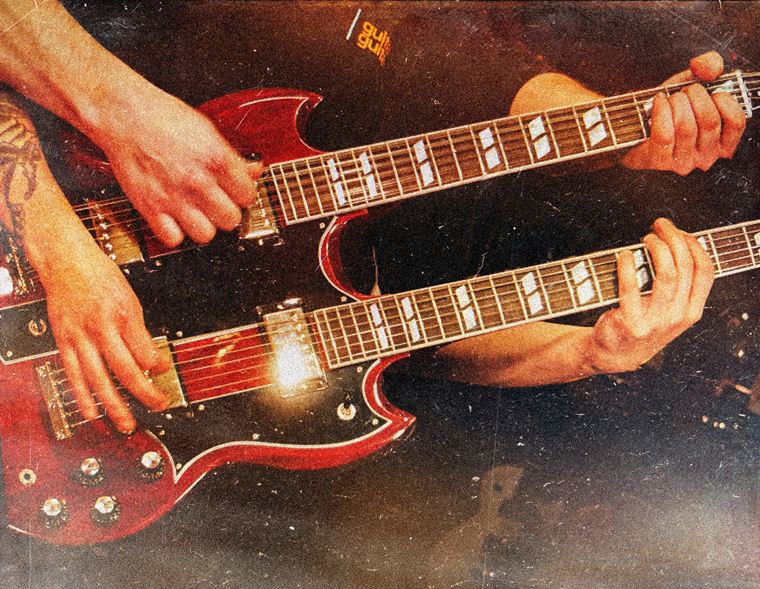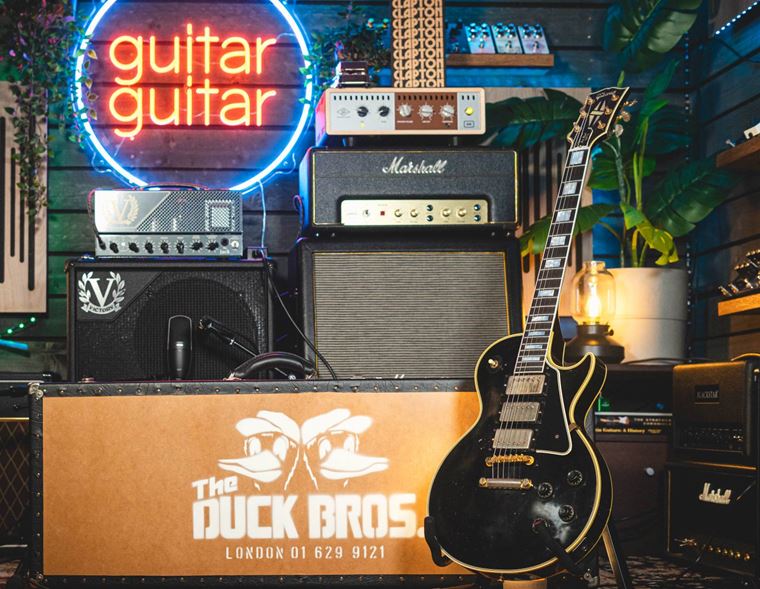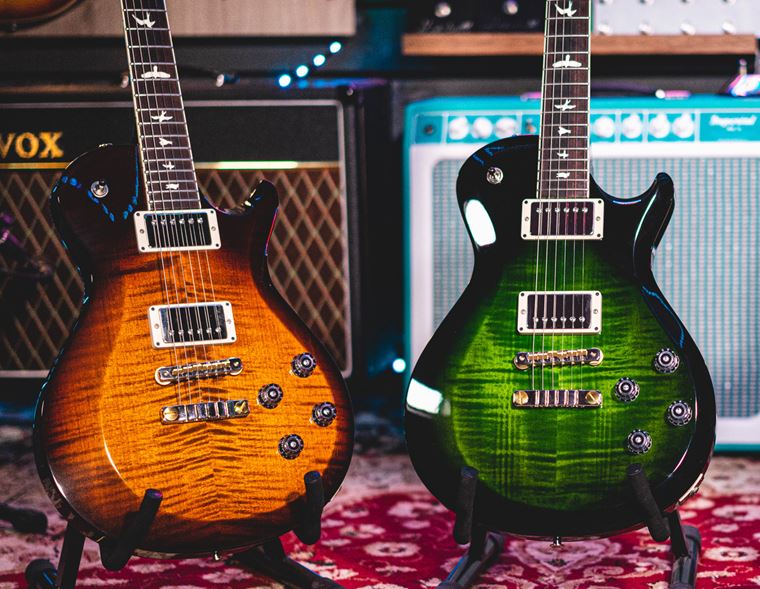Acoustic Guitar Tonewoods: Our Expert Guide
Published on 04 December 2023
We talk a lot about tonewoods here at guitarguitar, and with good reason: timber plays a huge part in the look and sound of our favourite acoustic guitars! Wood plays a massive role, and it makes sense to have a good working knowledge of what to expect sonically from an instrument, just by reading the specification list.
Today, I aim to offer up some straightforward descriptions on the more major woods we all come across as guitar aficionados. I’ll talk a little about the context in which they are used, and maybe a little about their origin and so on.
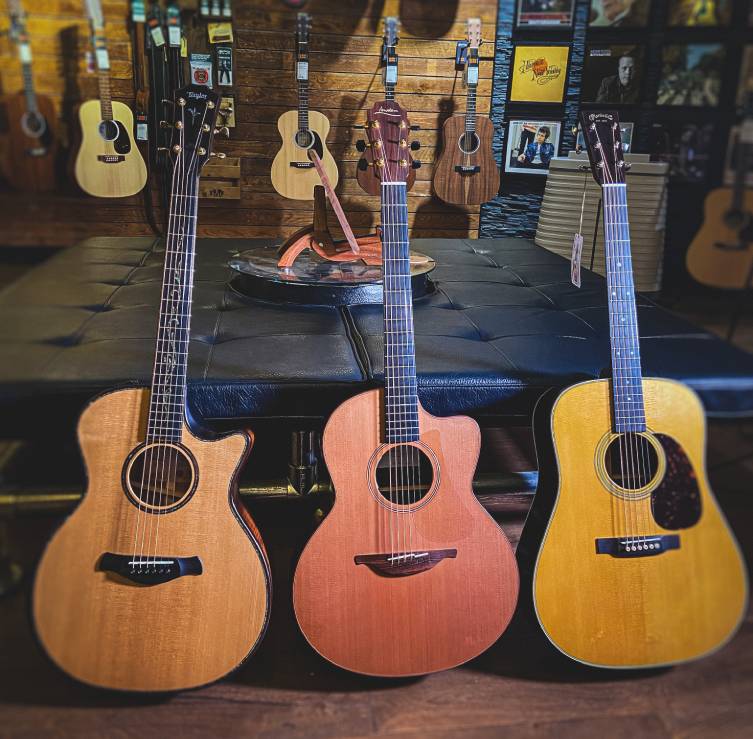
What I won’t do is try to be exhaustively definitive here: there are literally thousands of species of tree out there, and we only really concern ourselves with a few varieties in the guitar world. These woods also have lots of ‘cousins’ as it were: we’ll see that Koa is actually very, very similar to mahogany, for example. I’ll include koa in today’s blog since it’s so prominently used in guitar building, but the same won’t be true of other species that are maybe more ‘adjacent’ to the main tonewoods in the guitar building culture.
This blog is about acoustic guitar tonewoods, but I’ll amble off into the subject of electric guitars too, when it seems appropriate. It’s all related, really!
Anyway, that’s my preamble: let’s talk timber!
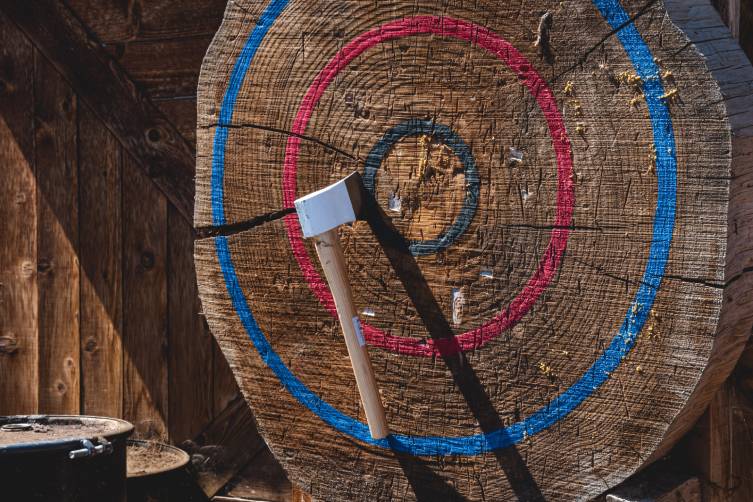
Contents
Timber Talk
Before we charge on, actually, I’d like to define some terms, just to make the reading of this blog a little easier.
With acoustic guitars, I’ll be saying ‘body’ a lot. This is not the entire body but the back & sides. Acoustic guitars are generally made with the same timber for the back and sides (the body) and the top is most often a different timber, unless the whole thing is built using mahogany or koa. So if I say ‘spruce top, rosewood body’, you’ll know what I mean.
By the same token, ‘top’ means the same as ‘soundboard’, since they are once and the same.
I’ll also make a distinction between a ‘maple neck’ and a ‘maple fingerboard’ so they are two quite different things, regardless of how interchangeably some people use those terms.
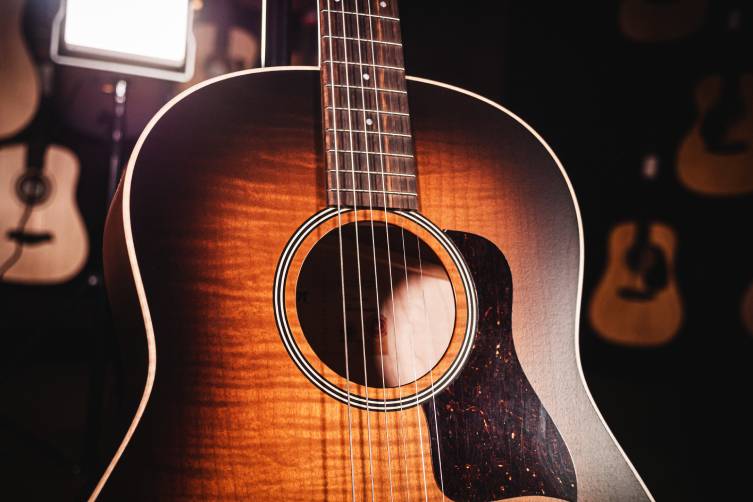
Maple
Maple is a wood you’ll definitely be familiar with. Maple is the primary wood used in electric guitar necks, particularly of the bolt-on variety. Any electric guitar with a ‘light’ coloured fingerboard is likely to have a maple one, though it’s likely that it’ll still be two pieces of wood, rather than a one piece maple neck with frets hammered into it.
Great, but this blog is all about acoustic guitar tonewoods, so does maple fit into that world?
Maple is a very strong, stiff and dense timber found all over the world, and particularly in the Americas. Maple is a bright sounding wood and is often used for acoustic guitar bodies, particularly with bigger designs like jumbos, where additional treble content in a sound profile is desirable.
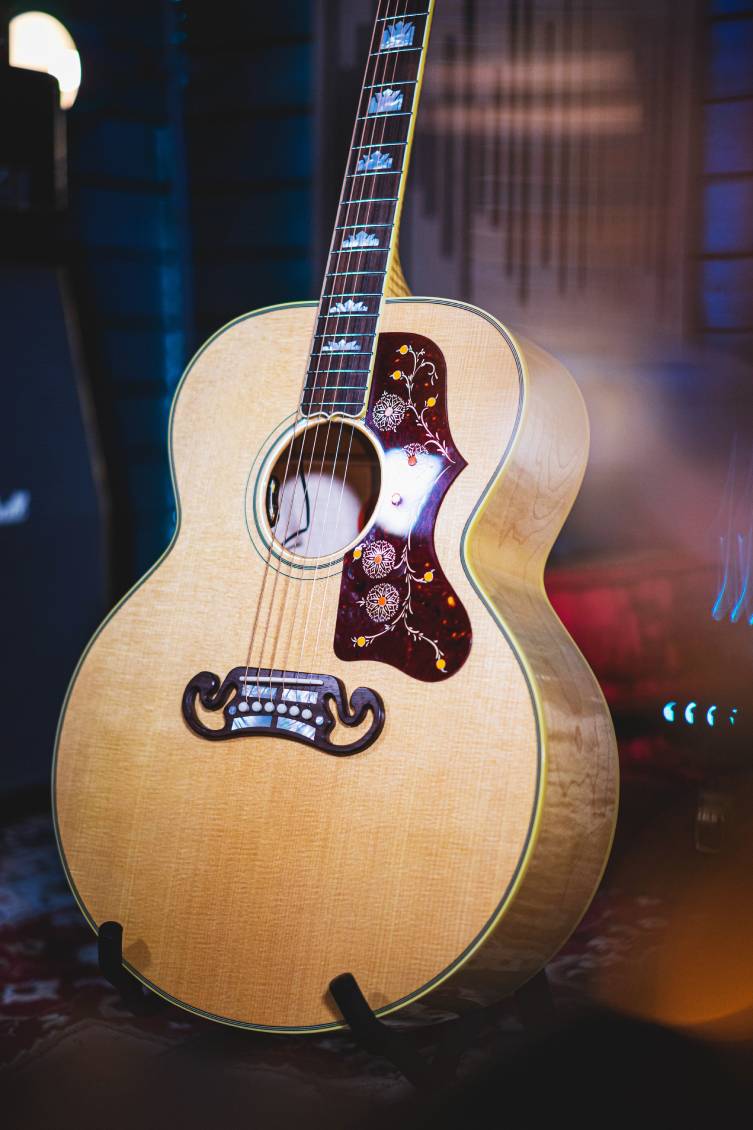
Sometimes you’ll find an acoustic guitar that is made entirely of maple, but it’s not the most common thing, since some other timbers simply work better in tandem with maple to give us the sounds we’ve come to expect over the years.
You’ll sometimes see maple used to make semi acoustic guitar bodies, but most often those will be layered plies of several woods. Yes, that includes Gibson ES335s and ES175s etc.
Maple can be very attractively figured and we have lots of names for that figuring, depending on how it looks: flamed, curly, tiger stripe etc etc. Figured maple is sorted into increasingly dramatic looking grain patterns, from A to AAA. The Gibson SJ-200 guitars have flamed maple back & sides, and look ridiculously handsome, as do the custom Taylors that employ flames on every surface!
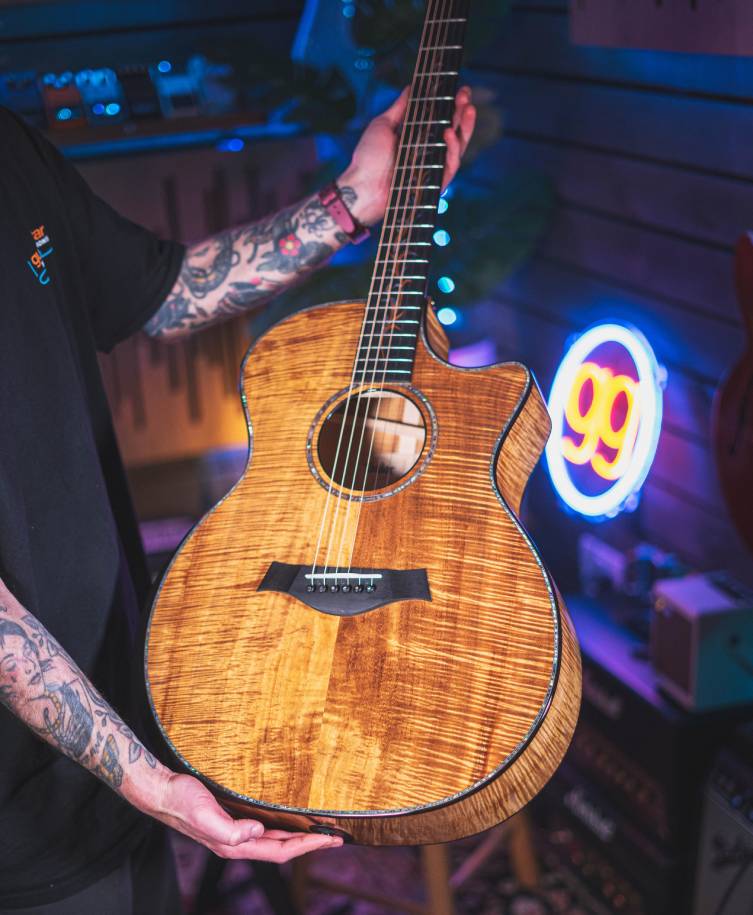
Of course, figured maple veneers are used on occasion for guitar tops, to make them appear more beautiful, but it’s mostly the owls of electric guitars that take advantage of that: PRS guitars and Gibson Les Pauls are notable adopters of a good figured maple top! PRS use the term ‘10 Top’ as a payable upgrade for their very best figured maple tops, actually. The brand is famous for having indecently pretty guitars, and a huge part of that attraction is that highly/tightly flamed maple top.
A figured maple veneer is what you’ll get on cheaper guitars. It’s a similar idea to a top/cap but just significantly thinner. The thinness keeps the cost down and you still get a pretty top, but you’ll not see AAA levels of wonder on a veneer.
Why is Maple not used to make solid electric guitar bodies? Simple. It’s really heavy! A solid maple electric guitar is a bad joke for anyone attempting to strap it around their shoulder. It would be off-puttingly bright, too, I imagine (I’ve never had cause to seek one out, should such a thing even exist), and there are just better body woods out there to use.
Better woods like this one…
Mahogany
Mahogany is one of the main choices for acoustic guitar bodies across all brands. Plentiful, easy to work with (from a builder’s point of view) and delivering a warm, rich tone, mahogany is a dream timber in the guitar world. It’s a top choice for neck construction too, since it’s easy to shape and resonates well. Do people talk enough about the tonal qualities of guitar necks? Maybe not!

A popular use for mahogany is actually for the entire guitar: the body, the top and the neck. Martin’s 15 series being a particularly famous example of this. The 15 series came around during World War II, when people needed a more affordable guitar. Mahogany was a cheaper wood than spruce or rosewood back then, and its tonal character ended up producing a classic sound and look that has now become a sort of official option with many brands. What started as a compromise has now become a legitimate choice for players.
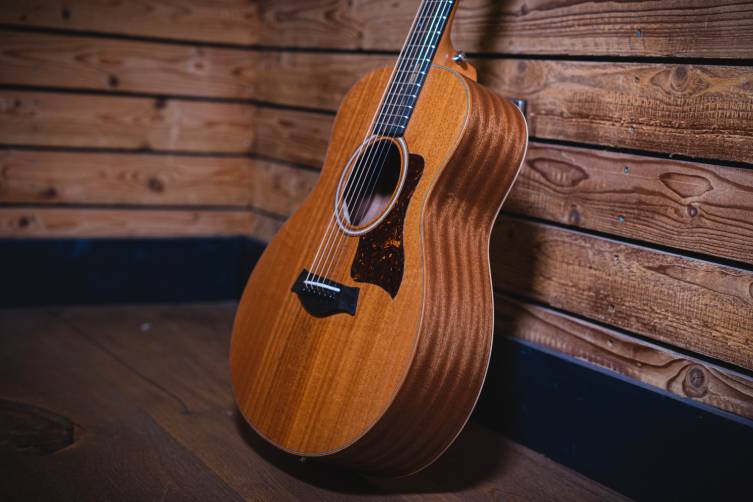
Mahogany sounds deep and thick, with lots of rich resonance available. It is not a bright wood, and there is not as sharp an initial ‘cut’ to notes, so those who wish a warmer, more intimate sound should consider mahogany. Fingerpickers love mahogany guitars because there’s a less obvious percussive quality, compared to models that sport spruce or maple.
Let’s be clear though: it’s not like you can’t strum a mahogany guitar! It’s just that mahogany gives a subtly different tonality that seems to suit certain styles and tastes.
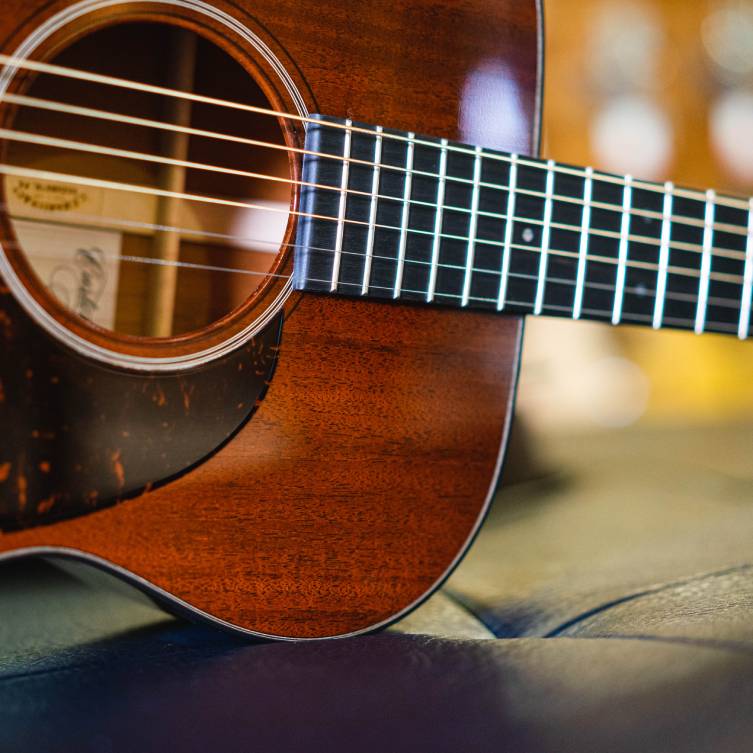
Koa
Koa, simply put, is a very close cousin to mahogany, with pretty much the same tonal characteristics. It's native to the Hawaiian islands only, and is relatively scarce, despite how often the guitar business uses it as a tone wood!
So yes, a Koa guitar will sound very close to an all-mahogany guitar, and you’ll also see it being used as a body timber alongside a spruce top. The main difference with Koa is how it looks, really. There are a wide variety of grains and figurines that look pretty stunning when used on an acoustic guitar’s top.
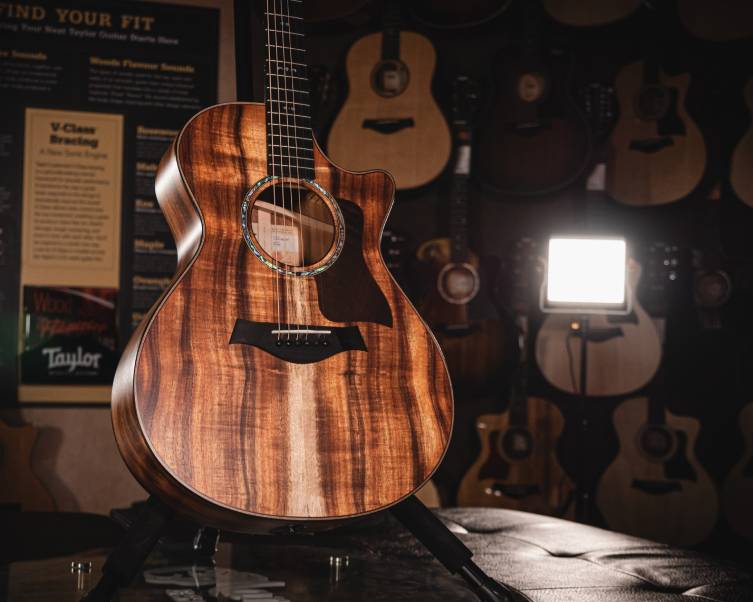
Spruce
Spruce is the wood used on more acoustic guitar tops than any other. Spruce is a stiff, string wood that also happens to resonate very well. This makes it perfect for guitar tops, since it translates the energy of a string vibrations really well, and offers it up as a bright, clear sound.
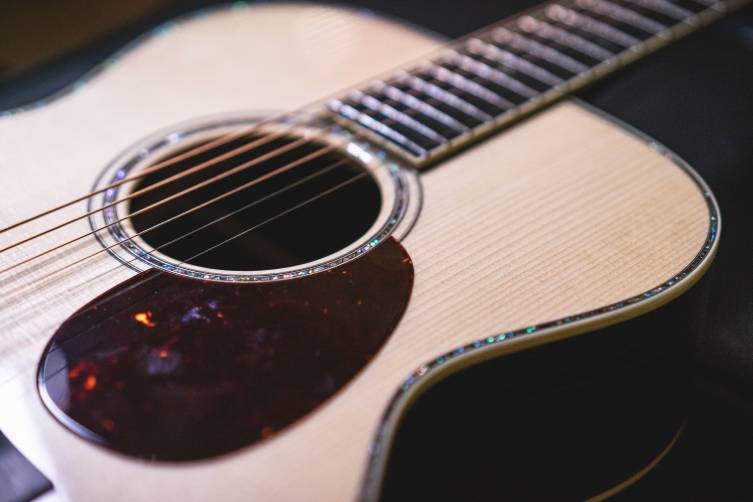
Spruce is available in a few upmarket varieties, and these are normally differentiated by their geographical location. Adirondack Spruce (the Adirondacks are a mountain range in upstate New York) is reputed to have the most dynamic range, and Sitka Spruce (Sitka is a town in Alaska) is the sort of standard for a good piece of Spruce.
Spruce does not tend to show up in electric guitar making, basically for these reasons: it’s not the easiest to work with, it looks somewhat ‘plain jane’ and it’s expensive. Also, its tonal characteristics matter less on electric guitars, since they use magnetic pickups and amplifiers to make their sound at least as much as with wood.
Cedar
Cedar is a timber that’s often used for acoustic guitar tops thanks to its signature rich, warm sound. It’s a deep, soft sound that is very musical, though is certainly not a lively, immediately responsive timber like spruce.
Cedar is found in many countries (including the UK) but it’s particularly prolific in the US and Canada. Cedar trees are generally large and grow fast, so their use as a tonewood is responsible. It’s a relatively soft wood too, so it resonates well but slightly slower than with stiffer wood. This is a property you might ‘feel’ as a guitarist more than hear.

For players who have a spruce topped guitar, cedar will provide you with a specifically different sound, look and feel. Justification enough to go on a hunt for a lovely cedar topped guitar!
Rosewood
Rosewood is all over the guitar world, and in a variety of places. As a fingerboard choice, it’s so popular that the timber actually got put on the CITES list for a while. CITES stands for Convention on International Trade in Endangered Species of Wild Fauna and Flora and is an organisation who, in this context, look after and regulate worldwide wood use to make sure it’s all responsibly dealt with. They do more than that, but this is how it applies to us.
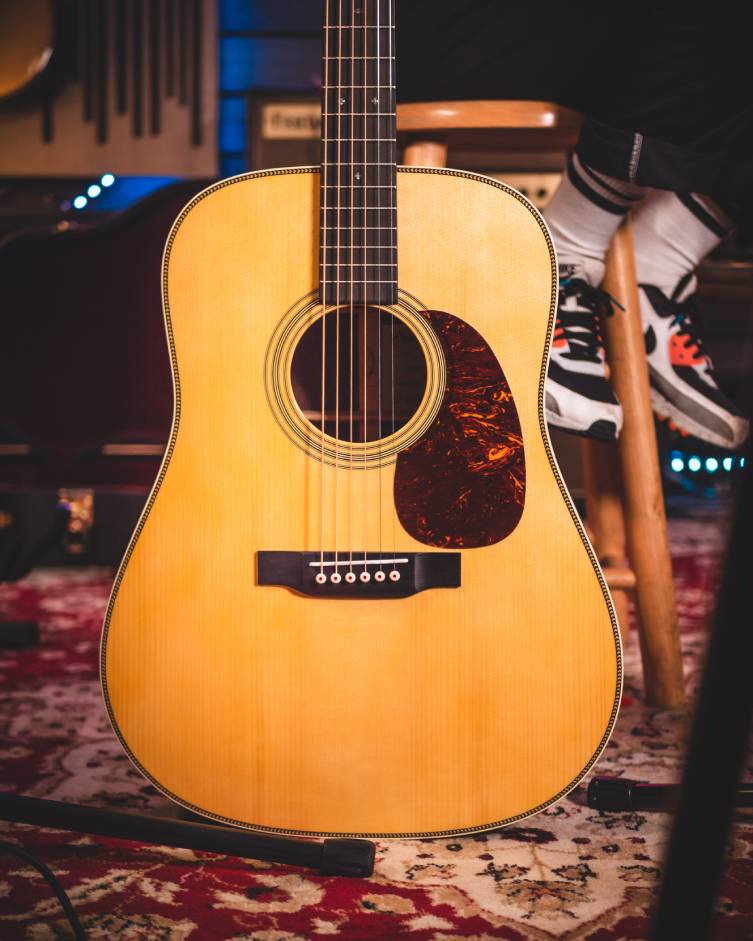
Rosewood is now considered plentiful enough to be used again, in responsible quantities, which is great news for guitar players.
Rosewood is found in many places, though some - like India, Brazil and Honduras, for example - are held in greater esteem due to the strength and colour of the wood. Rosewood is dark brown with a touch of red in it, and it’s a stiff, strong wood. Sonically, it creates a bold fundamental note that is more focused than, say, mahogany. In fact, it’s almost fair to say that there’s a bit of midrange missing from rosewood’s tonal profile: you get the strong lows and the sparkly highs, but definitely less of those warm mids.
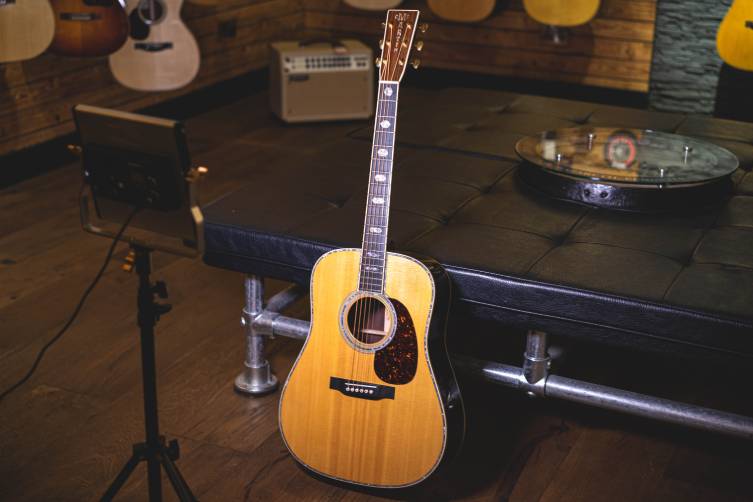
Paired with a nice slice of spruce, it’s one of the best-sounding wood combinations on earth.
Ebony
I’m including Ebony on here since it’s a significant factor in many acoustic guitars. It’s actually not a timber that’s very often used in building bodies or tops, though. This isn’t because it sounds rubbish - far from it, it’s like an OTT piece of rosewood, more or less - but because it costs roughly ten times as much as rosewood. Rosewood is already a premium timber since the CITES situation, so Ebony is often seen as prohibitively expensive.
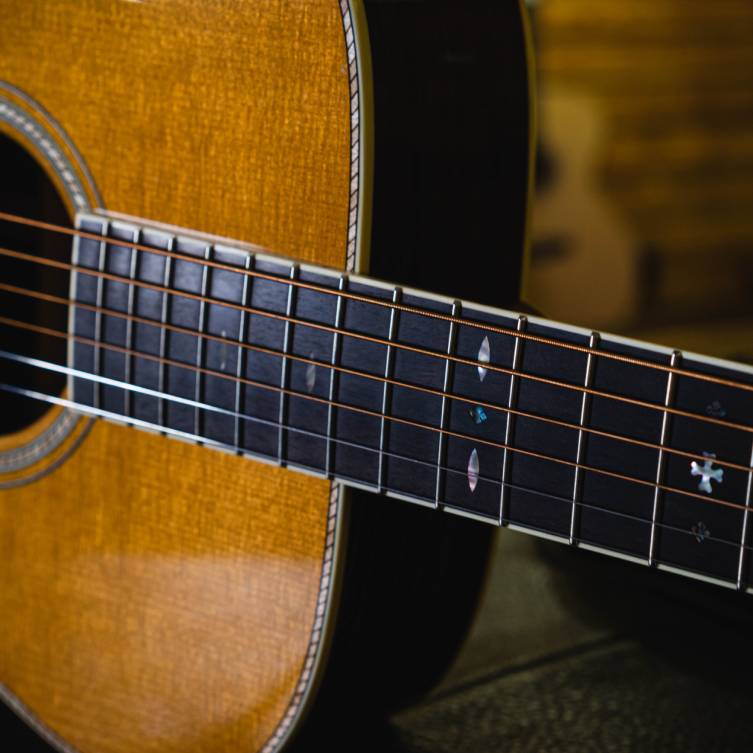
That said, it’s massively popular as a fingerboard wood, and is also used for bridges, headstock decorations and that sort of thing.
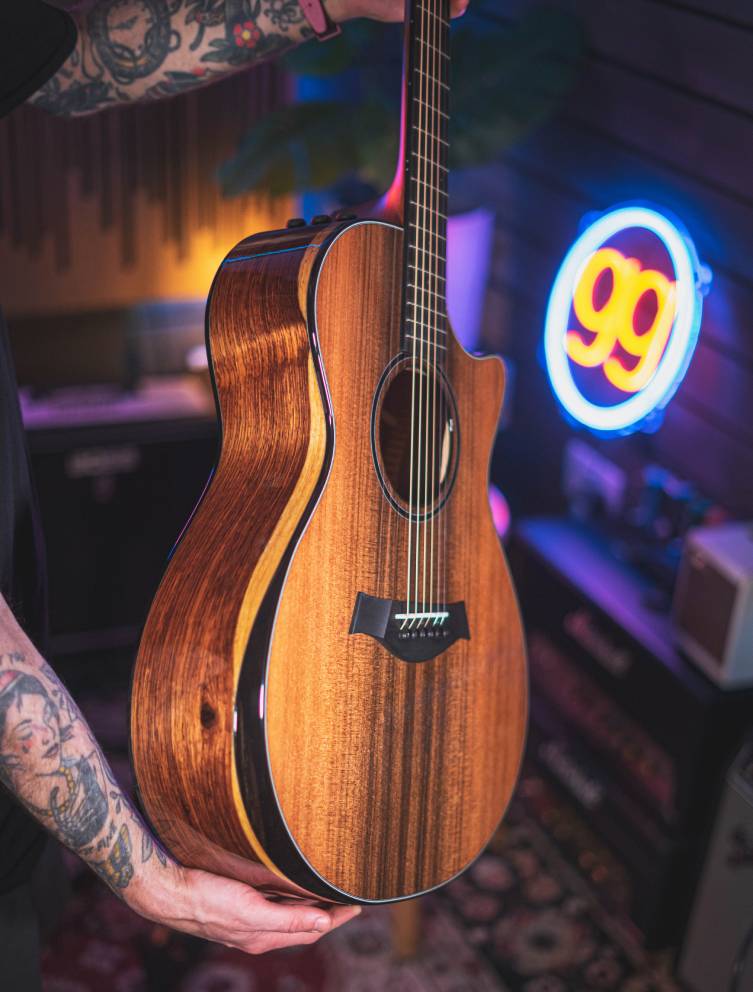
Taylor love using ebony so much, they actually bought an entire ebony processing plant out in Cameroon, Africa. They responsibly handle their ebony from there, and have introduced the idea of seeing value in ebony that has streaks in the grain. Traditionally, only the blackest looking examples of ebony were used by the guitar industry, leading to an unreal amount of waste. Taylor are changing that notion, and hopefully the rest of the industry will follow suit.
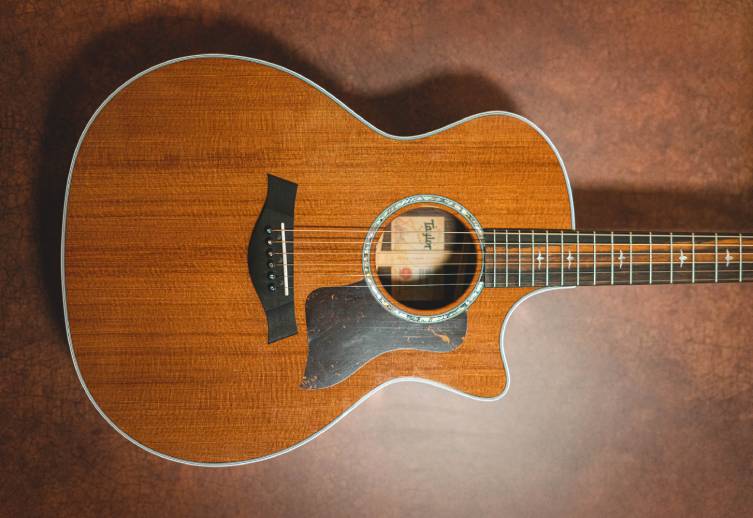
Blackwood
Blackwood is a timber you’ll see on many Australian brands such as Cole Clark, Fenech and Maton. Tight, punchy-sounding and rich with complex overtones, Blackwood is an excellent tonewood. It’s not the easiest to work with, though, as it is stiffer than even Brazilian rosewood, but it is available in places like Tasmania so can be harvested locally, making it a good eco-choice.
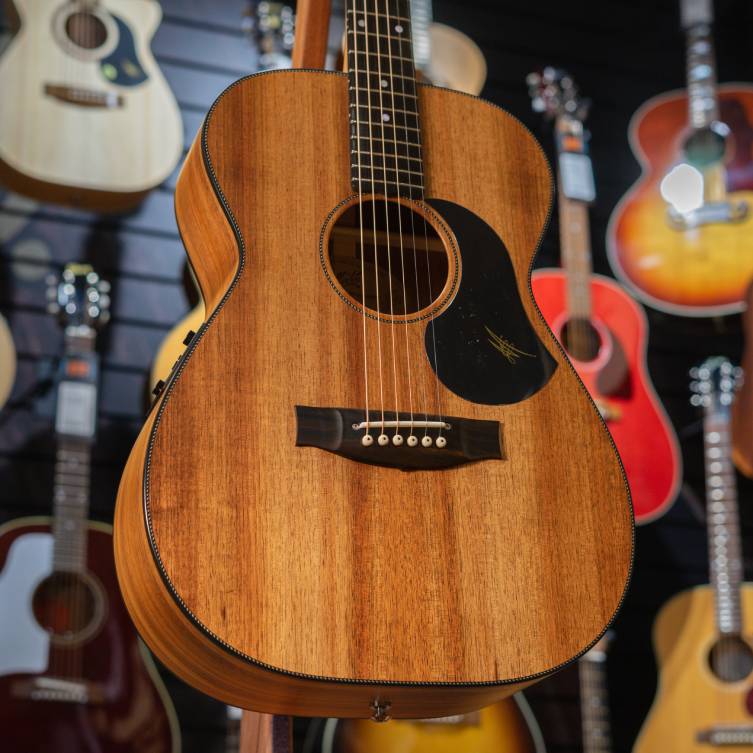
Blackwood is one of those timbers that works well as a body choice alongside another timber (such as redwood or spruce) or as a single voice for the entire guitar.
Redwood
Redwood is a timber that’s perhaps less traditional to guitar building, but very much suited to it. Redwood has a tight grain and a nice balance to the tone. Maybe people compare it to a nice piece of cedar but with a little more top end sparkle. I think that sounds about right, but I’d definitely emphasise the fact that it does have its own sound.
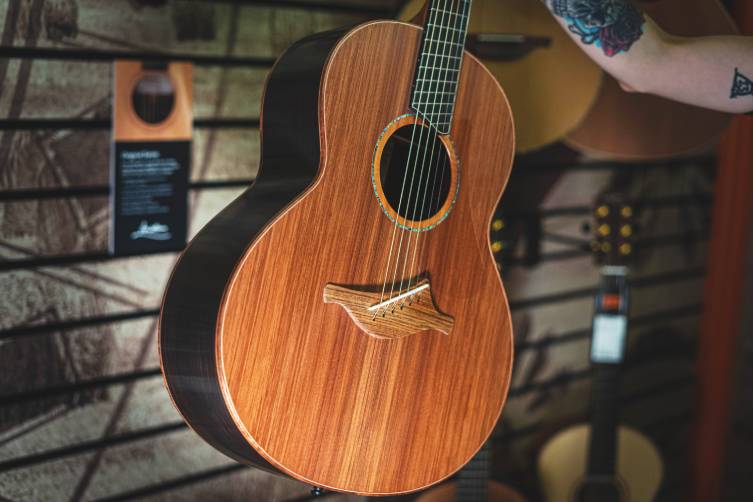
‘Sinker’ Wood
You’ll see some manufacturers talking about ‘sinker’ wood: sinker redwood or sinker mahogany. What does this strange term mean?
When trees get chopped down, they go to a wood mill to be processed into logs. Those logs then often get sent to another destination via a closeby river: the logs are literally sent floating downstream until they get to where they need to be, where they then get collected and moved onto whatever next stage of their voyage lies waiting for them.
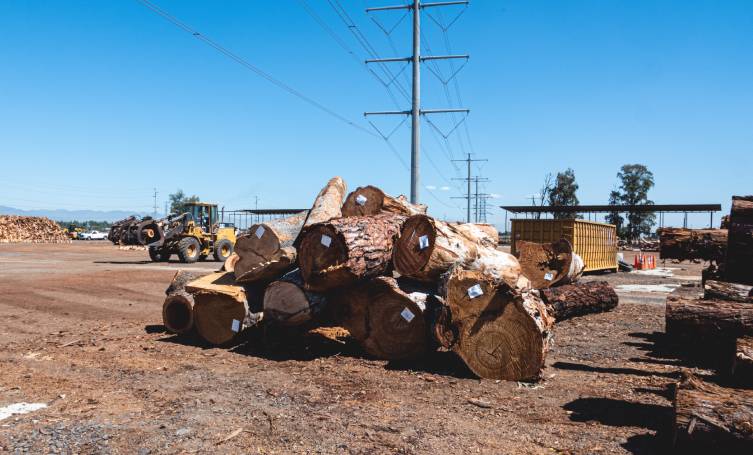
Sometimes, the odd log of two will get stuck or sink into the river. It's expected, to some degree, and business normally continues with the timber written off.
These are your sinker logs! Decades later - and we are talking about periods of over a century sometimes - they are located, brought up out of their watery beds and sold on as timber. Naturally, the wood has endured some level of change over the decades due to sitting in a river bed, so there will be a denseness to the wood and different nutrients that have soaked in.
All this plays a part in the sinker wood having a different set of properties as a tonewood. Used well, sinker woods can add something special to an acoustic guitar. The story of the wood is definitely part of the appeal, but it’s also a good, responsible way to get material, since the tree is no longer going to waste.
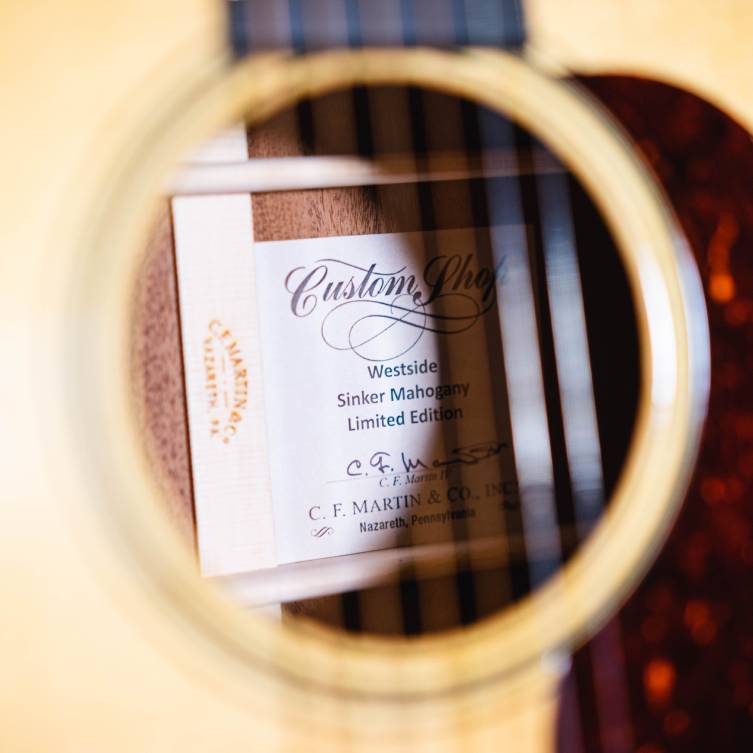
Does Wood Matter?
When it comes to acoustic guitars, does wood matter? Don’t they all sound the same? Is it all just marketing?
You may not be surprised to read this, but I think the wood choices are very important. If you zoom out your lens far enough, then yes, all acoustic guitars have an inherently similar sound: of course they do, otherwise we’d need to call them something else! But when you develop opinions of what you’re hearing, and start appreciating different tonal characteristics, then you really do begin to hear the difference between an all mahogany guitar and one with a mahogany back and spruce top, for example.
This is when the whole experience of being a guitar player deepens, and the closer you listen, the deeper it gets. How does that timber work with the others in the guitar? How does it translate the touch of your finger on the string into sound? How do you react to that?
It’s all part of the game, really - inner and outer - and just as some people prefer a telecaster over a jaguar, some guitarists like to hear spruce & rosewood whilst others want koa.
What appeals to you? The only way to find out is to play, listen and form opinions. We can help, so visit us and get playing
Click to Browse All of our Acoustic Guitars






